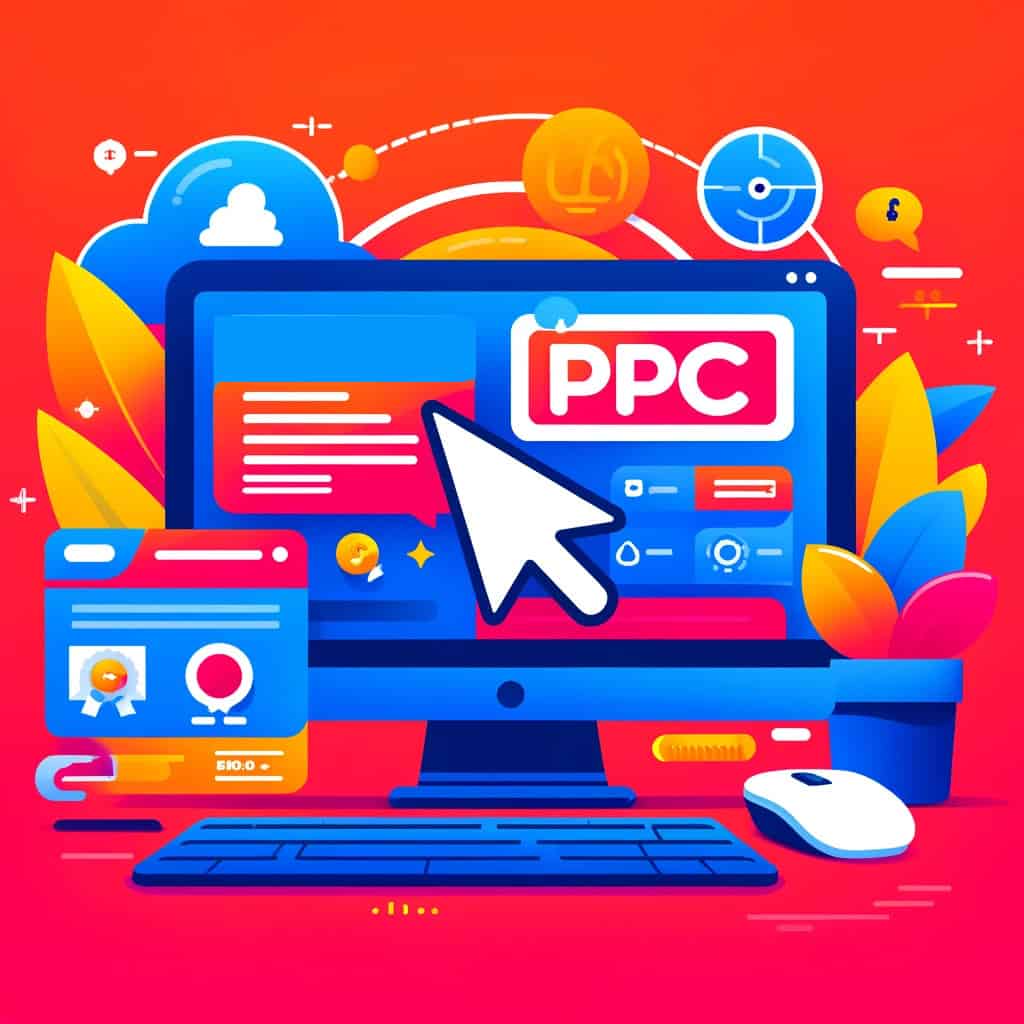
In an era where digital marketing strategies for small businesses define business success, mastering effective digital marketing strategies is no longer optional—it’s essential. As a small business owner, you’re not just competing with neighbours but also with global giants. This blog post promises to guide you through 10 proven digital marketing strategies that will propel your business forward. You’ll learn how to expand your reach, engage more effectively with your customers, and drive meaningful growth that impacts your bottom line.
Marketing your business effectively is not just about visibility; it’s about making intelligent, cost-effective investments that yield high returns. Solid digital marketing strategies for small businesses can help you reach a larger audience at a lower cost than traditional media. It also allows for more targeted approaches to get the right audience at the right time with the right message. However, digital marketing requires a mix of skills—strategic thinking, creativity, analytical abilities, and an understanding of technology. Each plays a crucial role in crafting campaigns that capture attention and convert leads into loyal customers.
For many small businesses, acquiring these skills can be a significant hurdle in time and expense. This is where hiring a marketing consultant can be a wise decision. A skilled consultant brings expertise in multiple areas of digital marketing, from SEO and content strategy to email marketing and social media. By leveraging their broad skill set and experience, you can ensure that your marketing efforts are practical and efficient, helping you achieve your business goals faster and with better ROI.
1. Leverage Social Media Marketing
Social media platforms offer a goldmine of marketing strategies for small businesses to engage directly with their customer base. Choosing the right platform—Instagram for visually appealing products or LinkedIn for B2B services—is crucial. Effective social media marketing involves more than sporadic posts; it requires a strategic content calendar that covers educational content, community interactions, and promotional announcements. Platform-specific features like Instagram Stories, Facebook Live, and interactive polls can also significantly increase engagement and customer loyalty.
Social media also serves as an invaluable tool for gathering customer insights. Small businesses can learn about consumer preferences and adjust their offerings by monitoring comments, shares, and likes. Engaging with customers through timely responses and acknowledging their feedback creates a community feel, encouraging further interaction and fostering a loyal customer base.

2. Optimize Your Website for SEO
SEO is a cornerstone of digital visibility. Optimising a website starts with keyword research—identifying the terms and phrases potential customers use to search for services or products like yours. Incorporating these keywords naturally into high-quality, informative content can dramatically improve your site’s ranking in search results. Moreover, ensuring that your website’s architecture is SEO-friendly (with a clear hierarchy and easy navigation) can enhance user experience and reduce bounce rates, further boosting your SEO efforts.
Beyond keywords and site structure, technical SEO elements like mobile responsiveness, fast loading times, and secure connections (HTTPS) are pivotal in retaining visitor interest and satisfaction. Since Google places significant emphasis on user experience in ranking sites, ensuring your website is responsive, and loads quickly on all devices can prevent potential customers from turning to faster, more secure competitors.
3. Utilize Email marketing
Email marketing is one of the most direct and personal ways to communicate with your audience. Effective email marketing campaigns start with a compelling signup incentive, such as exclusive content or first-time customer discounts, which can help build a robust email list. Regular newsletters, special offers, and personalised content keep your business top-of-mind. Segmenting your email list based on customer behaviour and preferences can further enhance the relevance of the messages, increasing open rates and engagement.
Crafting emails that resonate with recipients involves personal touches—using the customer’s name in the greeting and tailoring content to meet their interests or past purchasing behaviours. Automated tools can help personalize at scale, sending birthday greetings, anniversary discounts, or reminders based on user activity. These marketing strategies for small businesses improve customer retention and encourage repeat business by keeping your brand relevant to their needs.
4. Implement Content Marketing
Content marketing is more than just writing blogs; it involves creating a diverse range of content that appeals to different segments of your audience at various stages of the customer journey. Informative blog posts, engaging videos, downloadable whitepapers, and infographics can educate your audience and establish your brand as a thought leader in your industry. This valuable content helps build trust and authority with potential customers, making them more likely to choose your business when ready to purchase.
Moreover, strategically distributing your content across various platforms maximizes exposure and engagement. For example, sharing snippets of your content on social media can drive traffic to your website, while featuring user-generated content can enhance community engagement and brand loyalty. Regularly updating existing content and repurposing popular posts into other formats (like turning a blog post into a video tutorial) can keep your marketing strategies for small businesses fresh and relevant.

5. Explore Pay-Per-Click (PPC) Advertising
PPC advertising can be a formidable tool for small businesses looking for immediate visibility in front of a targeted audience. By placing ads on search engines and social media platforms, businesses can directly target demographics most likely to be interested in their products or services. Effective PPC campaigns require careful keyword research to ensure ads appear for the right searches, thus maximizing the return on investment.
Continuous optimization is vital to successful PPC advertising. Regular analysis of campaign performance, including click-through and conversion rates, allows for real-time adjustments, enhancing your ads’ effectiveness. Experimenting with different ad formats and placements can also help identify the most effective approach for your target audience, ensuring that your advertising budget is spent efficiently and driving the best possible outcomes.
6. Use Local SEO Tactics
Local SEO is particularly beneficial for marketing strategies for small businesses that operate on a regional level. Optimizing local SEO involves focusing on specific towns, cities, or regions. It is crucial for companies like restaurants, local service providers, and brick-and-mortar stores. To optimize for local SEO, ensure your business is listed accurately on Google My Business. Regular updates and posts and accurate business details (like address, business hours, and contact info) can enhance your visibility in local search results.
Another effective local SEO strategy is encouraging satisfied customers to leave positive reviews on your Google My Business profile. Reviews improve your business’s visibility, enhance credibility, and attract more local customers. Engage with all reviews by responding to and showing prospective customers that you value feedback and customer service.
7. Engage with Video Marketing
Video marketing is a powerful tool for capturing the attention of potential customers and conveying information in an engaging and digestible format. Start by creating introductory videos that tell your brand’s story or explain your products and services. Videos can be used on various platforms, including your website, social media, and YouTube, providing broad exposure.
For small businesses, videos offer the unique advantage of building a personal connection. Showcasing behind-the-scenes looks at your business or customer testimonials can create transparency and trust. Videos can be optimized for search with the right keywords, descriptive titles, and compelling descriptions, making them a valuable part of your SEO strategy.

8. Develop a Strong Brand Identity
A strong brand identity makes your small business instantly recognizable and helps differentiate it from competitors. Start by developing a consistent theme across all digital platforms, including a recognizable logo, consistent colour schemes, and a uniform tone of voice in all communications. These elements should reflect the values and appeal of your brand, resonating with your target audience.
Content that aligns with your brand’s voice and aesthetics can enhance customer recall and loyalty. A consistent brand message across all platforms reinforces your business’s character and can influence buying decisions positively. Branding isn’t just visual; it’s also about the emotion you evoke in your customers, making them feel connected to your business.
9. Implement Referral Marketing
Referral marketing strategies for small businesses leverage your existing customers to generate new leads by encouraging them to refer friends and family. This can be one of the most cost-effective ways to gain new customers, as people tend to trust personal recommendations more than advertising. Implement a referral program that offers incentives to both the referrer and the referred, such as discounts, free products, or service upgrades.
Promote your referral program actively through your website, social media, and email communications to make it successful. Integrating seamless sharing options will make it easy for customers to participate and share their referral links. Tracking referrals and rewarding participants promptly can further enhance the effectiveness of your referral marketing efforts.
10. Analyze and Adapt Using Web Analytics
Web analytics tools like Google Analytics provide critical insights into marketing strategies for small businesses and how users interact with your website and marketing campaigns. These tools can track everything from page views and bounce rates to traffic sources and conversion rates, helping you understand what works and doesn’t. Regularly reviewing these metrics allows you to make data-driven decisions and optimize your digital marketing strategies effectively.
Use analytics to test different approaches in your marketing efforts, from your website design to campaign messages. For example, A/B testing various landing pages can tell you which elements perform best at converting visitors. Adjusting your strategies based on these insights can significantly improve your digital marketing ROI, ensuring your efforts align with your business goals.
Conclusion: Marketing Strategies for Small Businesses
By employing these ten digital marketing strategies, small businesses can create a robust online presence and engage effectively with their audience. Each strategy has its strengths, and when combined, they provide a comprehensive approach to digital marketing that can help any small business achieve substantial growth and success.
Don’t wait to start transforming your marketing strategies for small businesses! Contact me today to discover how I can help you implement these powerful techniques. Let’s grow your business together!
